
Kinematics test Grade 10made of 22 questions about acceleration and velocity
- Subject:
- Physics
- Material Type:
- Lesson Plan
- Author:
- Mostafa Soukarieh
- Date Added:
- 09/06/2018

Kinematics test Grade 10made of 22 questions about acceleration and velocity

In this activity, students build a simple computer model to determine the black body surface temperature of planets in our solar system: Mercury, Venus, Earth, Mars, Jupiter, Saturn, Uranus, Neptune and Pluto. Experiments altering the luminosity and distance to the light source will allow students to determine the energy reaching the object and its black body temperature. The activity builds on student outcomes from activity A, "Finding a Mathematical Description of a Physical Relationship." It also supports inquiry into a real-world problem, the effect of urban heat islands and deforestation on climate. Includes a teacher's guide, student worksheets, and an Excel tutorial. This is Activity B of module 3, titled "Using Mathematic Models to Investigate Planetary Habitability," of the resource, Earth Climate Course: What Determines a Planet's Climate? The course aims to help students to develop an understanding of our environment as a system of human and natural processes that result in changes that occur over various space and time scales.
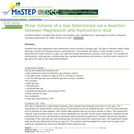
This activity is an indoor lab for use with Vernier gas pressure sensors that allows students to experimentally determine the molar volume of a gas and ideal gas constant.
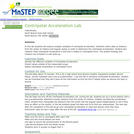
This activity is a indoor lab where student gather data about centripital acceleration and write up a lab based on their findings.

In this lab-based activity the students will use their knowledge about the law of conservation of energy to explain the loss of heat by warm water to cold water. Then, the students will use these concepts to design and carry an experiment to determine the unknown temperature of a hot water sample.
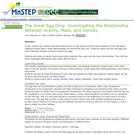
This activity is a field lab where students use a half gallon milk/juice carton containing two raw eggs and "other" materials to design an internal protective structure that will prevent the eggs from breaking from a 50 foot drop off a roof top.
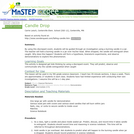
By using the discrepant event of dropping a burning candle in a jar, students will predict, experiment, and discuss why the candle goes out as soon as it is caught.
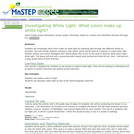
This activity is an investigation of what colors make up white light. Students will explore through two different hands-on activities.
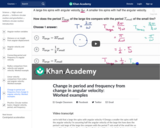
A worked example finding the change in the period from the change in angular velocity, and an example finding the change in frequency from the change in angular velocity.
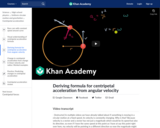
Deriving formula for centripetal acceleration in terms of angular velocity. using linear speed formula.
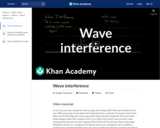
David explains wave interference and solves a few examples to find the value of the total wave when two wave pulses overlap. Created by David SantoPietro.
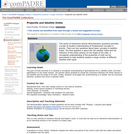
Gravitation introductory activity with interesting animation. The activity allows the student to revile the connection between the initial speed and the shape of satellite orbit.
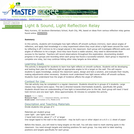
This activity is an experiment where students learn about angles of reflection and use that knowledge to reflect a light beam around obstacles to a target across the classroom.

This is in class lab activity where students will explore the buoyant force.

Three in-class lecture demonstration questions to test and build understanding of DC circuits are presented. These questions cover simple series and parallel circuits, and a more complicated circuit that is fundamental for understanding this topic.
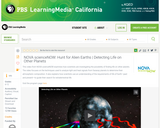
In this video from NOVA scienceNOW, learn how scientists detect potential signs of life on distant planets.
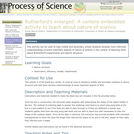
This activity can be used to help middle and secondary school students develop more informed understandings of some important aspects of nature of science in the context of teaching them about Rutherford's experiments and atomic structure.
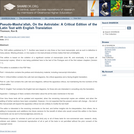
The 1935 edition published by R. T. Gunther was based on only three or four local manuscripts, and as such is defective in many places. Missing phrases, or mis-copies or mis-read phrases at times makes that text unintelligible.
This edition is based on the collation of a significant number of manuscripts (over 80, and eventually, it is hoped, all manuscript copies). What is now being published here is the text of the Prologue and of the first sixteen chapters (Version 1.1).
The edition is available in five PDF files:
Part I: Introduction contains the preface and introductory material, including manuscript information;
Part II: Critical Edition contains the Latin text and diagrams, the critical apparatus and a facing English translation;
Part III: Latin Text contains the Latin text and diagrams, without the apparatus criticus, but maintaining the line numbers of the critical edition;
Part IV: English Text contains the English text and diagrams, for those who are interested in consulting only the translation.
Appendix I: Catalogue of Stars contains information about the all the stars mentioned in the text.
Over time these texts will be updated and expanded, when the remaining manuscript copies are collated, and when the editing of further sections have been completed. However, it is not expected that the present version will change – the rest of the manuscripts will expand the apparatus criticus but are unlikely to modify the text itself.
The editor is interested in the receiving comments on the text, and further insights into its interpretation, from others. He is willing to incorporate such additions into future versions for the benefit of others who would consult this edition in the future. Comments can be sent to thomson@chass.utoronto.ca.
Permission is given for scholars to print out (and bind) any or all of these texts for non-commercial uses: research, study, criticism and citation. Commercial reproduction of all or part of the texts is not permitted without the prior consent of the copyright owner.
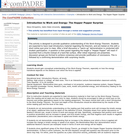
This activity is designed to provide qualitative understanding of the Work-Energy Theorem. Students are expected to have read introductory material regarding the theorem, and are tested on this with a short online quiz prior to class. After a brief discussion a "warm-up" demonstration is conducted with student participation. A question is then posed regarding the height a "Hopper Popper" will reach if launched from a thumb instead of a hard flat surface. After initial responses are presented, discussion groups are formed to achieve consensus and provide justification of conclusions. This is followed by a confirming demonstration with surprising results.

Students apply their knowledge of the water cycle to investigate how annual precipitation patterns are related to geography and biology.